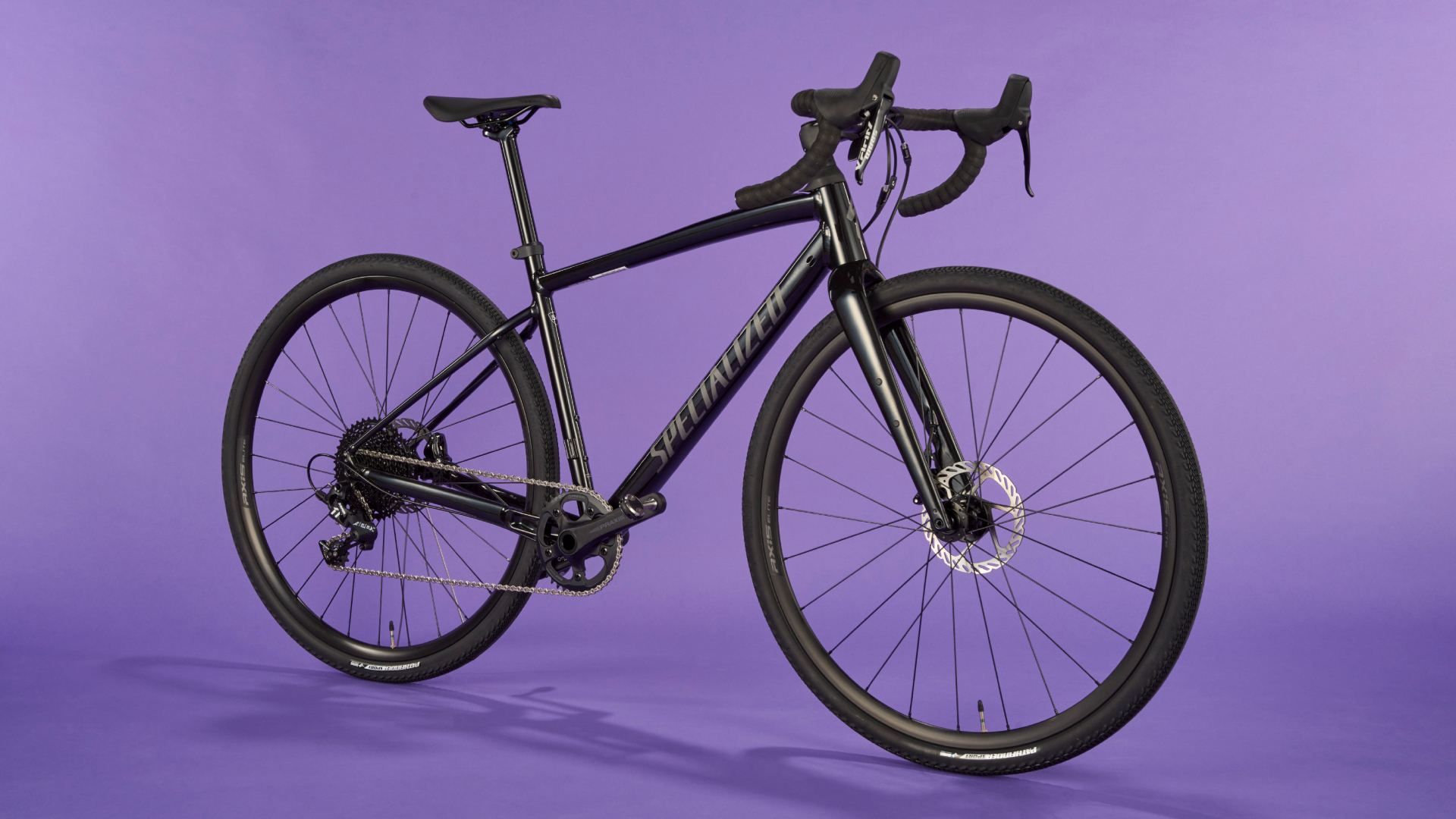
Specialized tout the Diverge as the fit-it-all gravel bike – be it racing, back roads or slippery singletrack. That’s either a lot for one bike to live up to or the answer to all our gravelly dreams.
One of the Diverge’s many headline features is its gargantuan tire clearance, up to 47mm for 700cc tire or 2.1” on a 650b wheel. It’s also follows the MTB trend of “longer and slacker” frame geometry with a shorter stem to keep it stable on fast descents and nimble through the trees.
The Diverge was one of the first gravel bikes to be equipped with ‘suspension’ with its front end Future Shock. The recently launched Diverge STR features the 30mm of rear suspension too.
We got our bums on the 2022 Comp E5 to see what the more affordable version of the Diverge is capable off, and how it compares to the best gravel bikes.
Specialized Diverge Comp E5: construction
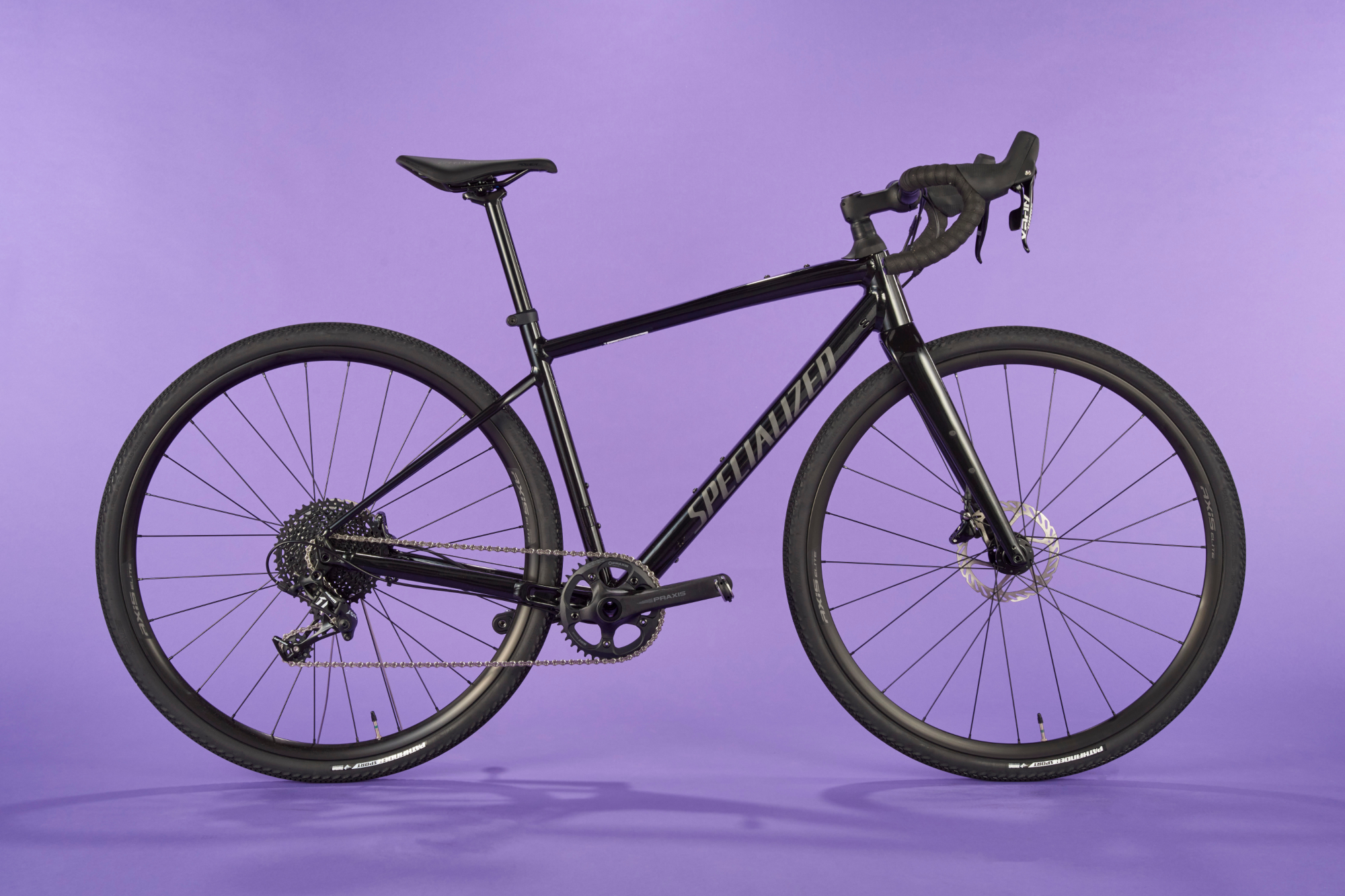
The Diverge Comp E5 is the top of range of the aluminium-framed Diverges from Specialized, combining the E5 alloy frame with a FACT carbon fork. The highlight of the Comp though is the Future Shock 1.5 which is only otherwise seen on the more costly carbon framed bikes. The Future Shock is a semi-integrated dampening system that gives up to 20mm of ‘compliance’ to smooth the feel of the bars on the rough tracks and trails.
The rest of the Comp E5 build combines parts from in-house, main brand and specialist component companies.
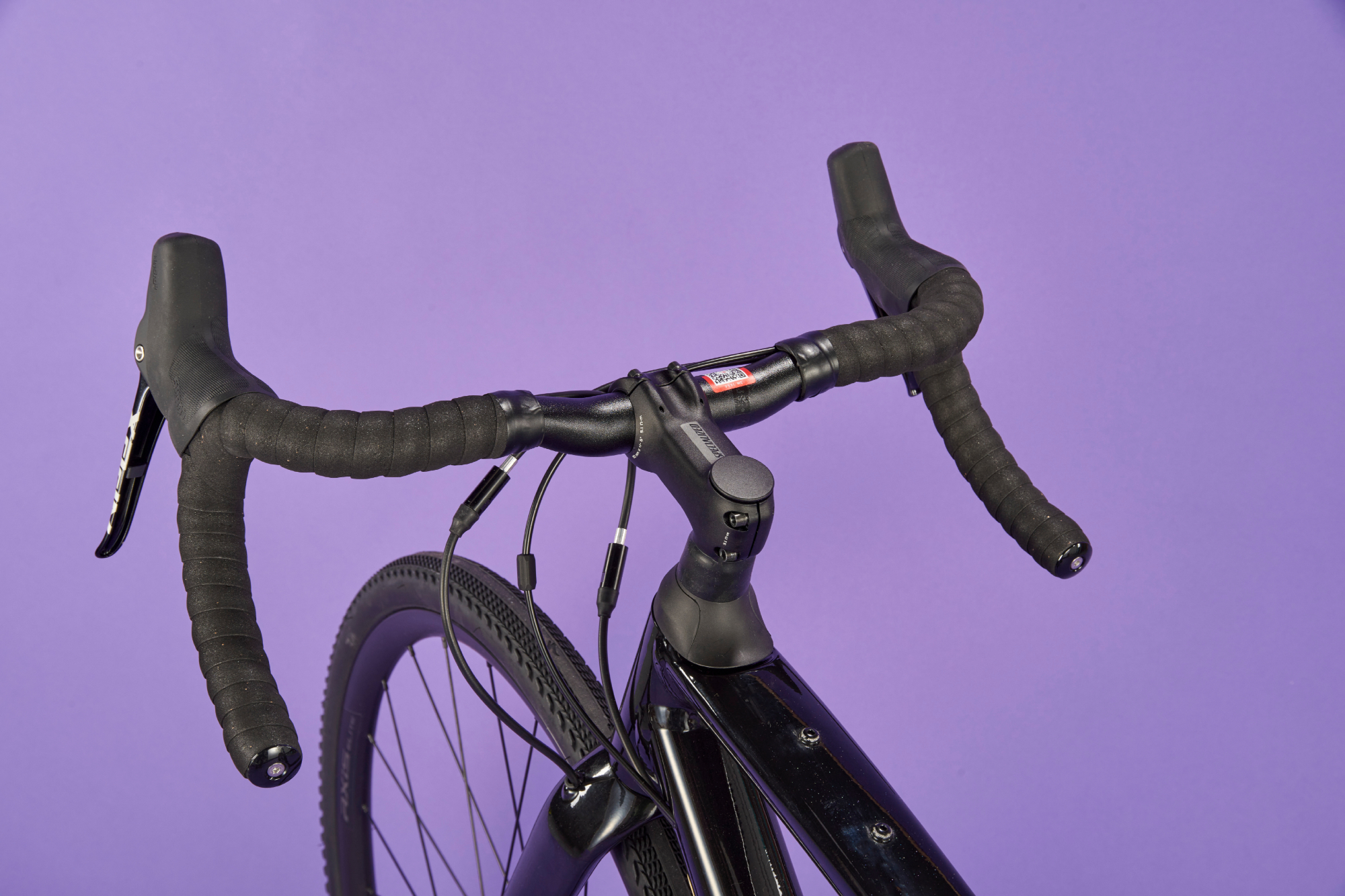
There’s 1x11 SRAM Apex gearing (shifters and mech) on a 40t chainring with an 11-42t Sunrace cassette and KMC chain. The crankset is a Praxis Alba and a threaded bottom bracket. Braking pairs the SRAM Apex hydraulic shifters with matching calipers on 160mm rotors.
Wheels are from Specialized’s in-house AXIS brand. The Elite Disc wheelset has carbon rims for a pacey ride, these are built onto proprietary hubs. Tires are Specialized Pathfinder Sport, 700x38c non-tubeless.
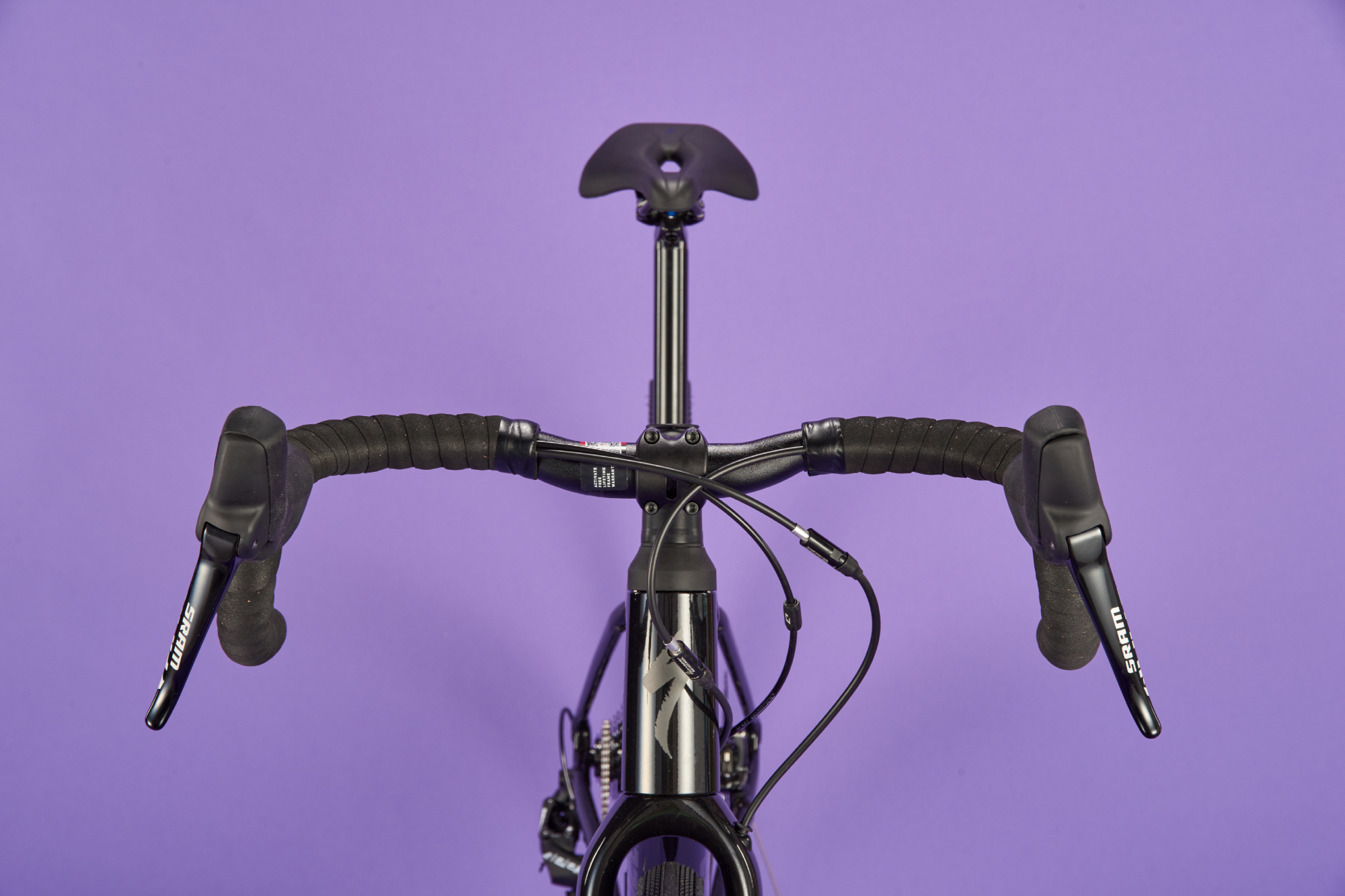
Cockpit, seatpost and saddle are all Specialized’s own with 12 degree flared riser bars. Our test bike was a 54cm frame and on our scales weighed 10.1kg without pedals.
One of the first things you might consider is converting the tubed wheels to tubeless. This will allow you to run lower pressures and really improve the capabilities of the tires and bike on rougher trails. As the AXIS wheels and Pathfinder tires don’t come tubeless ready you’ll need to factor in converting them with tubeless rim tape, valves and sealant. (As they’re not officially tubeless wheels and tires, there’s no guarantee that you’ll be successful and it’s not something we tried during our testing).
A final point of note on the wheels is that the rims have a 21mm internal width. This is fairly standard on a gravel bike as it suits tires of around 25-40mm which is what most of us want to run. It does mean if you were thinking about exploiting the clearance of the Diverge’s frame with a 47mm tire you’d probably want to swap the wheelset for one with a wider rim to optimise the tire profile.
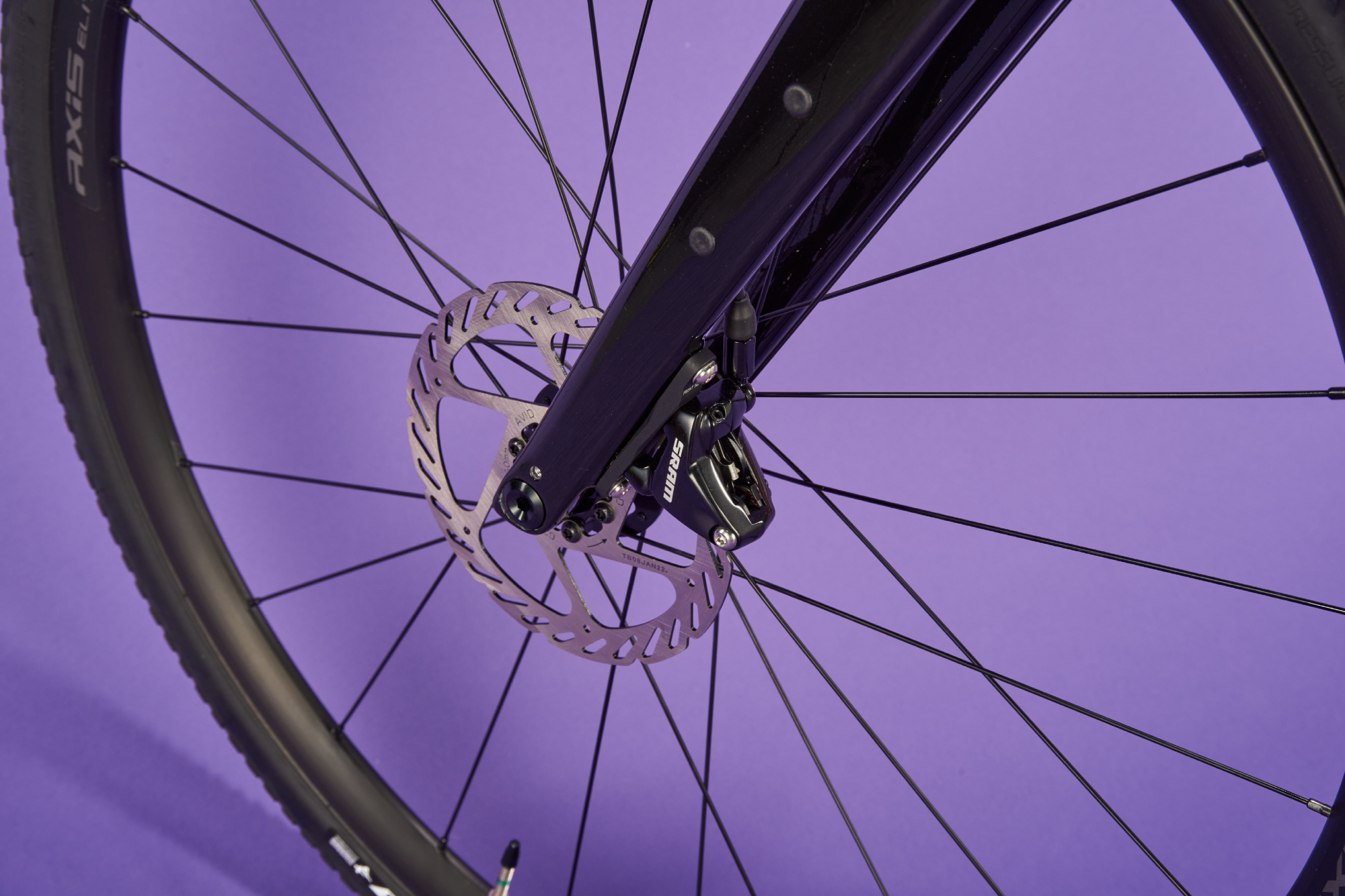
The Diverge has frame and rack mounts for pretty much every eventuality, ideal for those who want to ride everything and everywhere at one time or another. In total there are six pairs of bottle / luggage mounts for on the frame and forks, and ones for front and rear guards too. There’s also the front mech mount if you want to go two-by.
I might be being rather fussy but I was a bit disappointed with a few finishing details on what is otherwise a very tidy looking frame. Firstly, the internal cables are really rattly on rough terrain which foam sheathes would have easily solved. Then there’s the unused front mech mount which is far from the prettiest I’ve seen. Finally, there’s inconsistent and incomplete capping of the mount fittings. The bottle cages and frame bag mount have small bolts, the fork leg fittings have easy-to-lose rubber bungs and the rack mounts are open to the grime. The spare cable ports on the headtube (which would take a front mech and dropper cable if you ran them) are also left open. This does not look great and, more importantly, it risks dirt and water getting into the frame and clogging up bolt heads.
Specialized Diverge Comp E5: the geometry
The frame varies from the other E5 Diverges, not in its construction, but in its design to integrate the Future Shock. This in turn alters the geometry with a higher stack height (distance between the centre of the bottom bracket and the top of the head tube / Future Shock) compared to the other E5 models and the carbon framed bikes.
Due to the fixed size of components like the wheels and the Future Shock, proportionally the stack height is much greater on the smaller framed bikes than the larger ones. This means someone riding a 49cm frame will end up with a much higher feel to the bike than a rider on a 61cm version. Our 54cm test bike has a stack of 592cm and reach of 383mm, a 61cm bike has a stack of 659mm and reach of 410mm.
A final point on stack is that due to the Future Shock taking up steerer length there aren’t any spacers above or below the stem. This means you can’t change the height of the bars in either direction unless you flip the stem for a negative angle or swap bars for something with more or less of a rise.
Head tube angle is 70-72.25 degrees depending on the frame size and the fork has a 55mm offset for a balanced feel at high speeds. Chainstays are 432mm across all sizes which is a little longer than other alloy framed gravel bikes but is necessary for the crucial tire clearance.
Cranks, bars, stem, seatpost and saddles are all sized differently to according to frame size.
Specialized Diverge Comp E5: the ride
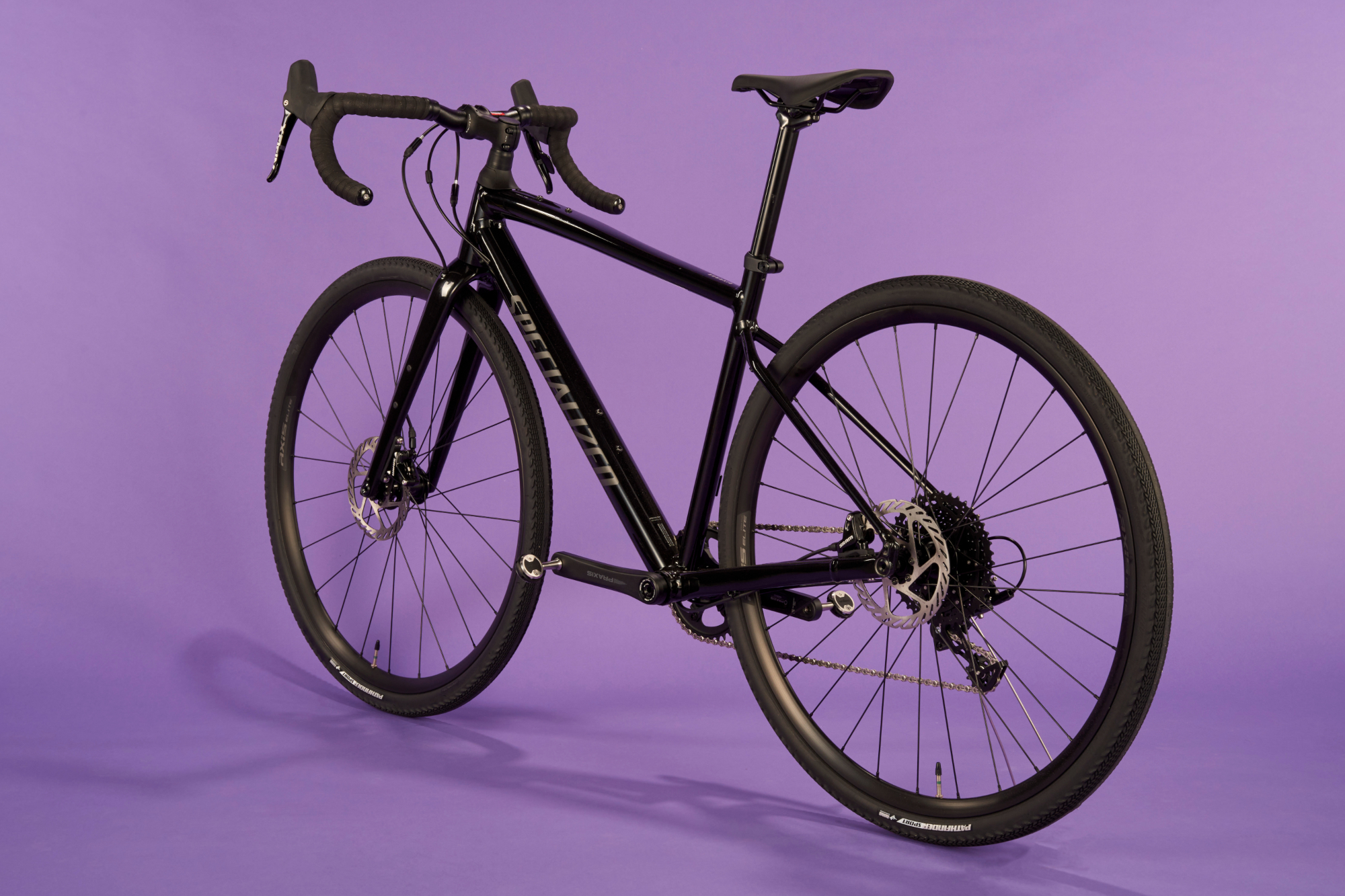
As kitted out and built, the Diverge Comp E5 is orientated towards its back-country lane touring mode. The high front end and Adventure Hover bars give a relaxed and comfortable feel. The Pathfinder Sport tires are equally well orientated to trucking forward, a combination that makes you ride a little faster and harder than your legs and lungs would like to take. It’s been absolutely perfect on the tracks and back roads this winter which have really suffered from some extremely wet and cold weather, taking hours and miles of riding in its comfortable stride. Being able to fit full guards makes it a perfect bike for this kind of winter riding.
In contrast, I found the out-the-box set up less suited to the rowdier end of gravel riding. Even in the drops the high front end made it hard to pin weight through the front wheel for grip through tight trails. As I’ve already mentioned, the 54cm frame I was riding does have a relatively higher front end than the larger framed bikes. I also like riding with my bars quite low so others may not find the height of the front end to be as much of an issue.
The Pathfinder Sport tires were also quite restrictive on twisty and rough trails, let alone the soggy British winter tracks I’ve been riding of late. My choice would be to sacrifice some of the straightline speed of the Pathfinder for a tire with a little bit more bite on the shoulders to hold in the turns.
Going the whole hog and swapping the 700cc wheels out for my 650b with 2.1” XC mountain bike tires certainly gave a whole different feel to the bike and it was an awful lot of fun. The flared bars helped give a stable position in the drops and a load of manoeuvrability on the trails.
I didn’t think I’d like the Future Shock, I’m of the view that I have suspension on my MTB and don’t need it on my gravel bike too, especially something that isn’t tuneable. It’s worth remembering the Future Shock isn’t there to provide suspension per se, it’s designed to absorb the buzz from the rough trails. I didn’t really notice it at all when I was riding; I could feel the trail through the front of the bike and there was no untoward bobbing or bouncing. Where it did make a difference was to the discomfort I’ve had in my wrists after riding too many inappropriate trails on my gravel bike in the last year. Vitally I could still comfortably hold the bars at the end of my ride and go out the next day for more, something I’ve struggled to do in the last few months.
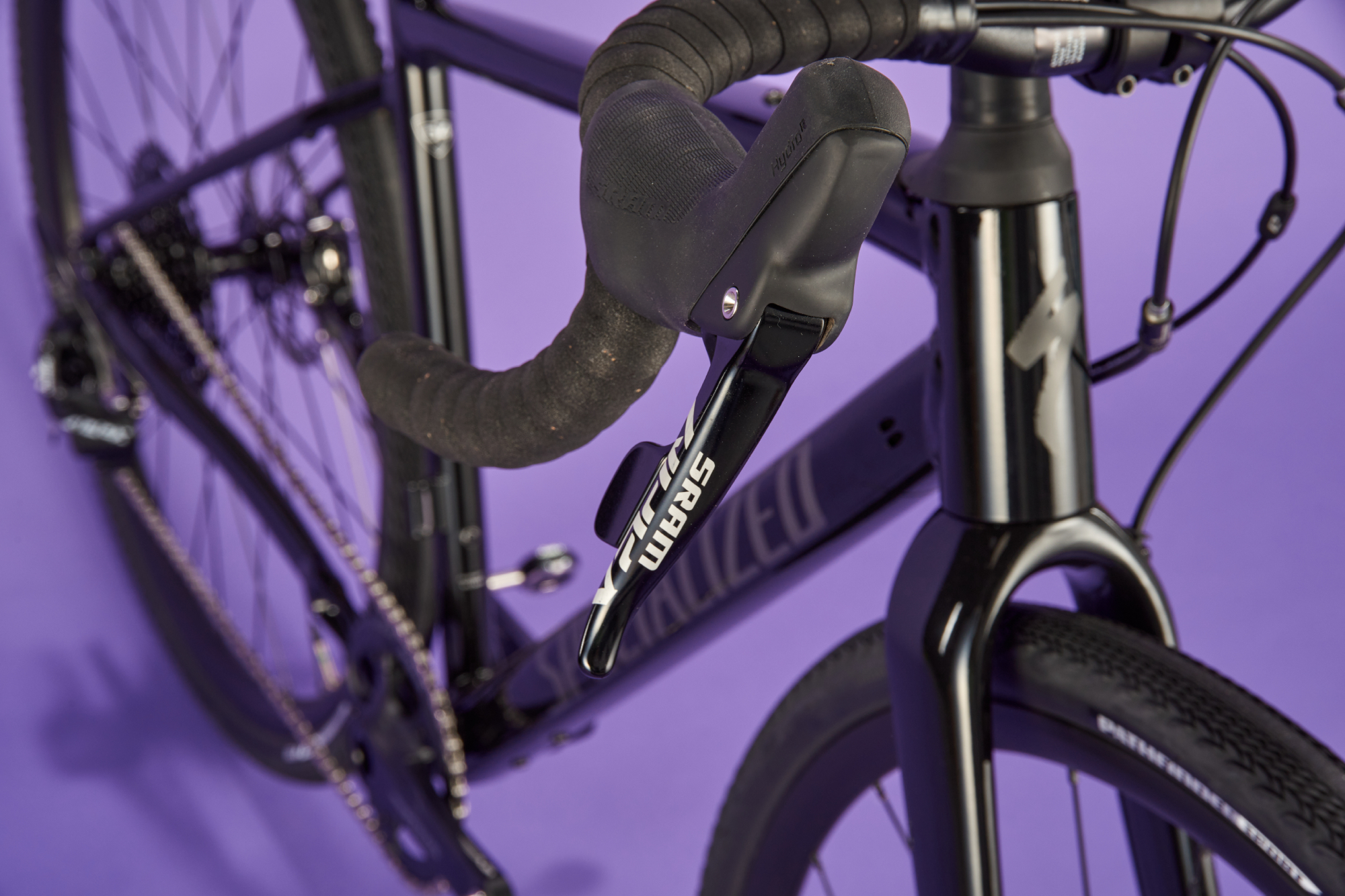
The performance of the SRAM Apex brakes was brilliant regardless of the conditions. Purists will argue against combining parts from different manufacturers in one drivetrain but I had no issues with the shifting on the Comp E5. The Apex gearing feels quite clunky, you definitely know when it’s shifted, but the actuation of the lever is surprisingly smooth and light. The 1x11 range of gears suited everything I did on the Diverge during testing but previous experience tells me that I would want a bigger range if I was going to make the most of the luggage carrying facilities or take for big rides in the mountains. There’s not an equivalent 2x build available from Specialized but you could make use of the front mech mount to convert yourself. This could end up being a costly option though as in addition to the front mech you’d need a different crankset and left shifter too.
Specialized Diverge Comp E5: value
With so many gravel bikes on the market the big brands like Specialized don’t always appear to offer the value for money at the lower end of the market that they once did. At $2,500 / £2,550 the Diverge Comp E5 does look a bit on the pricey end. But comparing across components doesn’t give the whole story, bikes like the Diverge have a lot of their value in the frame and component R&D and massively benefit from trickle down technology. There aren’t many other alloy gravel bikes at this price point with front end suspension and so much tire clearance.
The similarly priced Canyon Grail 7 eTap ($/£2,249) has an alloy frame and carbon fork. The Grail doesn’t have a Future Shock equivalent but instead SRAM Rival eTap electronic shifting. If you’re not bothered about suspension or electronic shifting, then this price point will buy you a carbon framed bike from less prominent companies like Vitus.
Specialized Diverge Comp E5: conclusion
The Diverge Comp E5 is a bike that’s capable of many things. Out the box the build favours the back road and fast gravel trails. A change of tires would open up its capabilities on tight and twisty trails a little more and changing to a tubeless set up is an obvious upgrade.
If you’re keen to have some front end comfort the Diverge E5 Comp is one of the few options at this end of the market to feature a dampening system. The Future Shock does have its downsides, namely its effect on the price and the height of the front end. The height issue is much more evident on the smaller frame sizes, the price issue depends how much you favour front-end squish.







